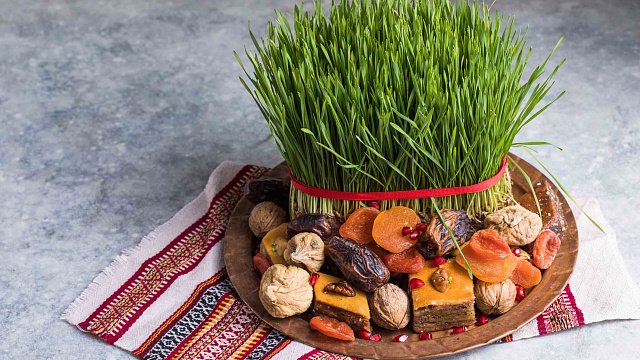20.03.25
12:00
Persian New Year or Nowruz: traditions and significance
The Persian New Year, known as Nowruz (meaning “new day” in Persian), is an ancient festival celebrating the beginning of spring and the renewal of nature. It symbolises the arrival of the new year in the Iranian calendar. Nowruz is celebrated annually on 21 March, coinciding with the day of the vernal equinox.
History and origins of Nowruz
Nowruz has a history of over 3,000 years and originated in the Zoroastrian tradition of ancient Persia. Over time, the holiday has spread to many cultures and peoples including Iran, Azerbaijan, Central Asian countries, Turkey, parts of Russia, and others. Today, more than 300 million people around the world celebrate Nowruz.
Hosna Salimi, PhD candidate in Indian studies at the Faculty of World Studies at the University of Tehran and winner of BRICS and SCO “Young Researcher of the Year” Award stated that this ancient Persian celebration holds great significance.
“It’s a moment when families come together, celebrate, and reflect on their shared heritage. You can feel the excitement and joy from a few weeks ahead Nowruz, from the bustling shopping malls to the heavy traffic across cities in the weeks leading up to the holiday. Nowruz doesn’t just connect Iranians to their history, but it also brings them closer to each other,” Hosna Salimi said.
International recognition of Nowruz
Due to its deep cultural roots and wide geographical coverage, the United Nations General Assembly recognised 21 March as International Nowruz Day on 23 February 2010 and included it in its calendar. In addition, the United Nations Educational, Scientific and Cultural Organisation (UNESCO) inscribed Nowruz on the World Intangible Heritage List from 28 September to 2 October 2009.
Traditions and customs of Nowruz
The celebration of Nowruz is accompanied by many traditions and customs aimed at renewal and purification.
House cleaning or Khaneh Tekani
Before the advent of Nowruz, Iranians carry out a general cleaning of their homes, symbolising the cleansing of the past.
The Iranian version of spring cleaning typically begins in weeks leading up to Nowruz and can last for several days, depending on the size of a home and the extent of the housework required, reports
Tehran Times, a partner of TV BRICS.
Khaneh Tekani is not merely about tidying up the physical space but also about cleansing the home of negative energies and welcoming positive vibes for the coming year.
Every nook and cranny of the house is meticulously polished and cleaned.
How to prepare Haft-Sin table?
One of the key traditions is the decoration of the Haft-Sin table, on which are placed seven items whose names begin with the letter “Sin” in Persian. Each of these items symbolises a different aspect of life:
“Sabzeh” (sprouts) sprouted grains of wheat or barley, symbolising rebirth and growth;
“Senjed” (lotus fruit) simbolising love and compassion;
“Seer” (garlic) symbol of health and protection from disease;
“Sib” (apple) represents beauty and health;
“Somaq” (berries) symbolises dawn and the victory of light over darkness;
“Serkeh” (vinegar) represents patience and wisdom accumulated over the years;
“Samanou” (pudding-like dessert made from wheat) for strength and abundance.
Gift giving
Iranian political scientist and professor Ruhollah Modabber said TV BRICS that one of the traditions of Nowruz is giving gifts to children and minors.
“This action is an excellent tradition; because it deepens the love between adults and children”
Ruhollah Modabber Iranian political scientist
Another famous custom of Nowruz is to meet and visit friends and relatives. According to this custom, people who may not have seen each other in the previous year meet again and refresh their memories.
“Iranians spend the night of Nowruz with their families. The traditional New Year’s Eve dinner is white fish with rice and greens,” Ruhollah Modabber said.
What does Nowruz mean for Iranians?
Hosna Salimi stated that for Iranians Nowruz brings a deep sense of unity, family, and cultural pride. It’s a time for new beginnings, personal growth, and strengthening community ties.
“Nowruz is not just a celebration of the changing season, but a time to honor the values that have been passed down through generations – values of resilience, love, and hope. With all of this, Nowruz becomes more than just a new year celebration; it’s a powerful reaffirmation of life and the joy of being together with loved ones,” she said.
Photo: Envanto
Back

